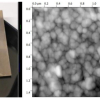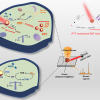
For decades, researchers have tried to develop spectroscopic techniques to offer non-invasive blood glucose monitoring. Near infrared (NIR) spectroscopy has been tried but has not offered a viable solution. Now, researchers from the University of Missouri School of Medicine and the Massachusetts Institute of Technology have evaluated the accuracy of a Raman-based technology; published in Analytical and Bioanalytical Chemistry (doi: https://doi.org/10.1007/s00216-018-1244-y). Early results show that the non-invasive technology measures blood glucose levels as effectively as a finger prick test.
The study measured the blood glucose levels of 20 healthy, non-diabetic adults prior to drinking a glucose-rich beverage. Blood glucose levels were then measured in intervals over the next 160 min using three methods: Raman spectroscopy, intravenous blood test and finger prick. The tests are designed to determine how much glucose remains in the blood and if a patient’s insulin-regulating mechanisms are working effectively. The researchers found that Raman spectroscopy predicted glucose values as accurately as a finger prick test.
“This is a technology that we have been pioneering for more than 20 years”, said Jeon Woong Kang, PhD, research scientist with MIT’s Laser Biomedical Research Center and co-author of the study. “We know that handheld skin prick tests are not always accurate and may be uncomfortable for patients. The gold standard is intravenous blood testing, but frequent blood draws may not be an option for many patients. We were pleased to find that our initial results show Raman spectroscopy can measure glucose levels that are comparable to the finger stick devices. We hope that we can refine this method to be a non-invasive continuous glucose monitoring sensor.”
With more testing, the researchers hope Raman spectroscopy can become an alternative method to test glucose levels in patients in clinical care settings who are not capable of frequent blood draws and, one day, in other settings as the technology becomes smaller and more portable. Future studies will examine the accuracy of the technology in patients with diabetes.














